#Dovedale valley
Photo
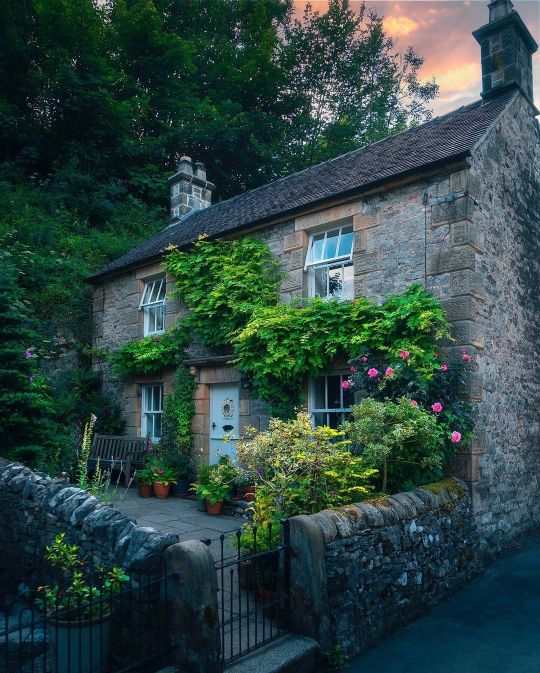

The quaint village of Milldale
Dovedale valley, Peak District, Staffordshire, England, Unieweed Kingdom ~ Cuma Cevik
#Milldale#Dovedale valley#Peak District#Staffordshire#England#United Kingdom#elegant countryside#cottagecore#cottagecoreedit#garden#my edit
162 notes
·
View notes
Text

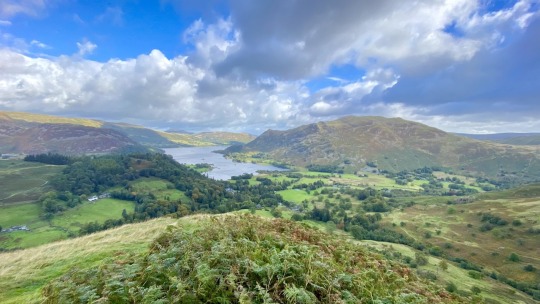


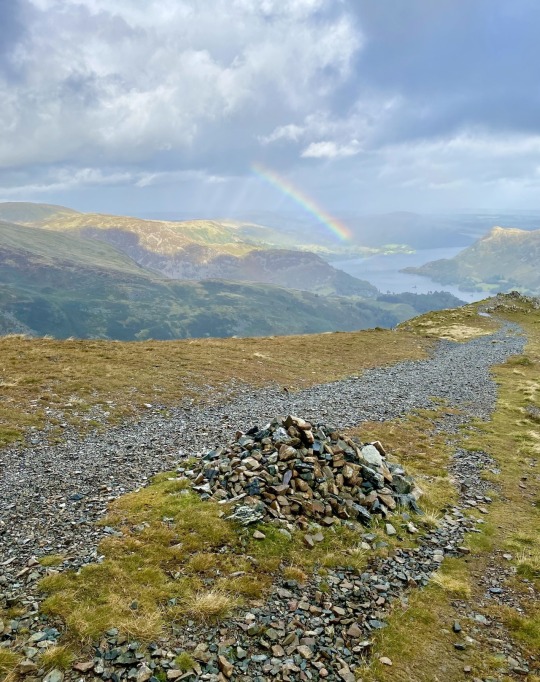

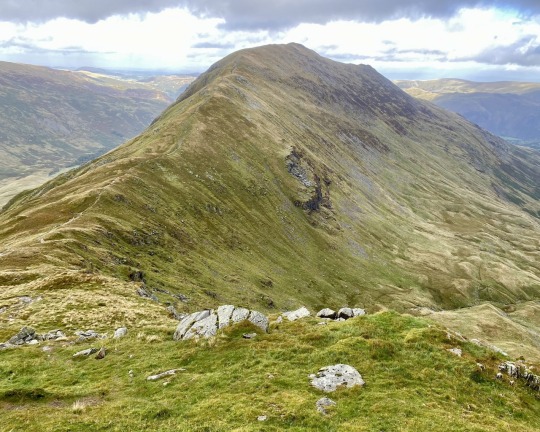

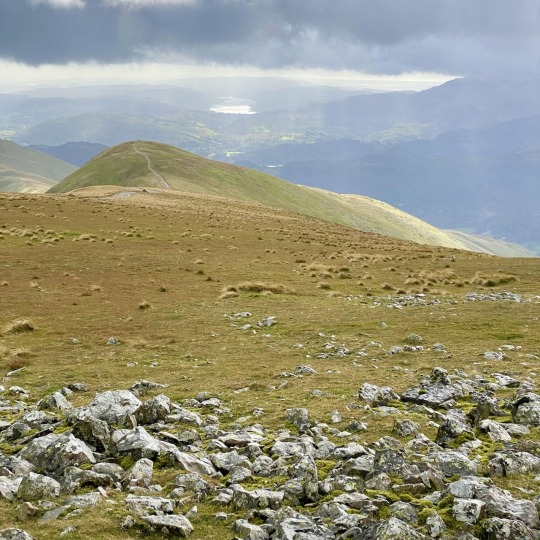
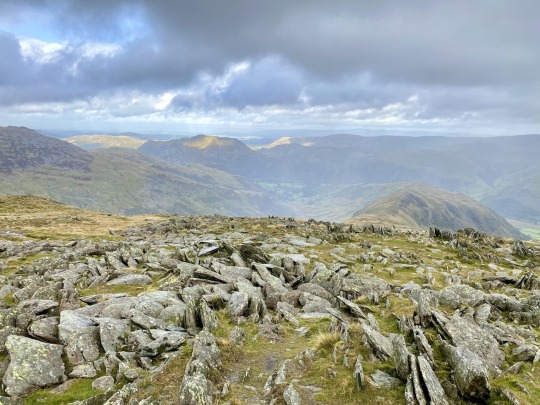



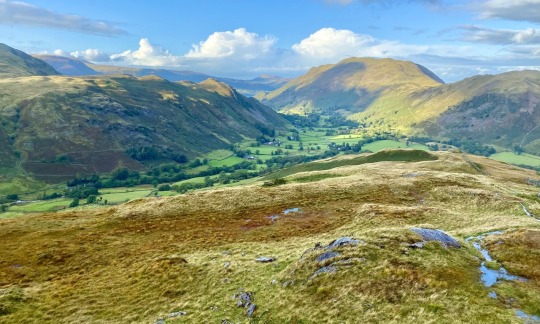

🌄 Announcing the Deepdale Horseshoe Walk
🥾 Hi all, I'm thrilled to share this fantastic horseshoe-style walk in the Lake District—the Deepdale Horseshoe walk. It's now live on my website! This journey begins in Patterdale and is one of my favourite Lake District walks, which I highly recommend. Everything you need to know about the walk, including parking details, maps, statistics, photos, and much more, is detailed on the site.
⛰️ The adventure starts with an ascent to the summit of Birks, your first Wainwright fell of the day. This peak provides a perfect spot for a break, offering stunning vistas of the surrounding landscape. From there, continue to the majestic St Sunday Crag, your second Wainwright, where an exploration of its broad plateau reveals breathtaking views over Deepdale.
🌲 The route then takes you over the rugged terrain of Cofa Pike leading up to Fairfield, Wainwright number three, famous for its extensive panoramic views that cover nearly the entire range of Lake District mountains. The journey continues eastward, crossing Link Hause to ascend Hart Crag, your fourth Wainwright fell.
🏞️ Your descent begins by crossing Hartsop above How, Wainwright number five. This ridge walk offers one of the best descents in the Lake District, characterised by gentle slopes, narrow ridges, and dramatic views into Deepdale and Dovedale. Finally, the trail leads through woodland and pasture to Deepdale Bridge on the A592 and back along the footpath to Patterdale.
🚶♂️ This invigorating 9½-mile Deepdale Horseshoe walk is a remarkable route for any walking enthusiast in the Lakes, comparable to other renowned circuits like the Coledale Horseshoe, Newlands Horseshoe, and Kentmere Horseshoe.
👉 Discover more about this captivating trail and start planning your adventure by following the link below.
0 notes
Text
The 9 most beautiful national parks in the UK
The United Kingdom is blessed with an abundance of natural beauty, and its national parks stand as shining examples of this diverse landscape. From the rugged mountains of Snowdonia to the tranquil lakes of the Lake District, these parks offer a sanctuary for wildlife, outdoor enthusiasts, and those seeking solace in nature. Spanning England, Wales, and Scotland, the UK's national parks showcase a range of environments, from ancient woodlands to windswept moors and coastal cliffs. Each park is unique in its features and attractions, drawing visitors from far and wide to explore their pristine landscapes and cultural heritage.
As we embark on a journey to discover the most beautiful national parks in the UK, we'll encounter breathtaking vistas, stunning wildlife, and opportunities for adventure and relaxation. Whether it's hiking to the summit of a mountain, strolling along a sandy beach, or simply enjoying the tranquillity of a forest, these parks offer something for everyone to enjoy. Come explore the beauties of the UK's national parks, each one acting as a reminder of the value of protecting these priceless landscapes for future generations and a monument to the natural resources of the nation.
Here are some of the of the most beautiful national parks in the UK.
1. Lake District National Park: A Haven of Natural Beauty: The Lake District National Park in Cumbria, England, is known for its stunning lakes, craggy mountains, and green valleys. Visitors may go on gorgeous treks, boat cruises across glistening lakes, and leisurely strolls through charming towns. Outdoor enthusiasts and environment lovers are drawn to iconic features such as Lake Windermere and England's tallest summit, Scafell Pike.
2. Snowdonia National Park features majestic peaks and rolling hills: Snowdonia National Park, located in North Wales, has spectacular mountain ranges, gushing waterfalls, and ancient woodlands. Mount Snowdon, Wales' tallest mountain, provides stunning views from its summit, which is accessible by hiking routes or the ancient Snowdon Mountain Railway. Outdoor sports such as rock climbing, mountain biking, and kayaking abound, making Snowdonia a haven for adventurers.
3. Peak District National Park: quaint villages and limestone valleys: The Peak District National Park, located in the heart of England, has picturesque towns, limestone crags, and rolling hills. Visitors may visit lovely towns like Bakewell and Castleton, which are known for their ancient architecture and delectable local cuisine. The park's various landscapes provide chances for hiking, cycling, and animal watching, with sites such as Mam Tor and the picturesque Dovedale Valley attracting tourists all year.
4. Brecon Beacons National Park offers untamed wilderness and dark skies: Brecon Beacons National Park, in South Wales, is distinguished by its craggy moorlands, historic ruins, and vast sky. The highest hill in southern Britain, Pen y Fan, provides panoramic views of the surrounding area. Outdoor enthusiasts may enjoy activities such as caving and equestrian riding.
5.Peak District National Park: quaint villages and limestone valleys: The Peak District National Park, located in the heart of England, has picturesque towns, limestone crags, and rolling hills. Visitors may visit lovely towns like Bakewell and Castleton, which are known for their ancient architecture and delectable local cuisine. The park's various landscapes provide chances for hiking, cycling, and animal watching, with sites such as Mam Tor and the picturesque Dovedale Valley attracting tourists all year.
6. Dartmoor National Park: Ancient Landscapes and Mysterious Moorlands: Dartmoor National Park, in Devon, England, is known for its untamed landscapes, granite tors, and expansive open areas. Visitors may stroll over windswept moors, see ancient stone circles, and see Dartmoor horses wandering freely. The park's rich past, which includes Bronze Age towns and medieval remains, contributes to its attractiveness, making it an intriguing destination for both history fans and outdoor enthusiasts.
7.Cairngorms National Park, Scotland's Highland Playground: Cairngorms National Park, located in the Scottish Highlands, is the UK's largest national park, containing breathtaking mountains, ancient forests, and calm lochs. In the winter, visitors may go skiing, snowboarding, and mountain biking, while the summer provides hiking, animal watching, and fishing. The park's different ecosystems sustain a variety of animals, including red deer, golden eagles, and Scottish wildcats, making it an ideal destination for nature lovers.
8.Pembrokeshire Coast National Park has dramatic cliffs and sandy beaches: Pembrokeshire Coast National Park, located on Wales' western coast, is known for its craggy cliffs, sandy beaches, and hidden coves. Visitors may explore the Pembrokeshire Coast Path, a 186-mile route that provides breathtaking views of the coastline as well as the opportunity to see seals, dolphins, and seabirds. Picturesque communities like Tenby and St. David's provide a beautiful setting for exploring the park's natural beauty and historic maritime heritage.
9.Northumberland National Park: Wilderness with Dark Skies: Northumberland National Park, in north-east England, is a huge area of moorland, undulating hills, and historic woods. The park is home to notable monuments, including Hadrian's Wall, a UNESCO World Heritage Site, and the beautiful Cheviot Hills. Northumberland's title as a Dark Sky Park provides unique chances for stargazing and astrophotography, making it an ideal visit for both astronomy aficionados and wildlife lovers.
Conclusion
The beautiful national parks of the UK offer a captivating escape into nature's embrace, showcasing the country's rich biodiversity and stunning landscapes. From the majestic mountains of Snowdonia to the serene lakes of the Lake District, each park holds its own unique charm and allure, inviting visitors to explore and discover the wonders of the natural world. For travelers seeking to experience these breathtaking parks, obtaining a UK visa from India is the first step towards embarking on an unforgettable journey. Whether applying for a UK visit visa from India or a UK tourist visa from India, it's essential to follow the application process diligently and provide all necessary documentation to ensure a smooth and hassle-free experience.
Once granted a UK visa, visitors can immerse themselves in the beauty of the UK's national parks, indulging in a myriad of outdoor activities such as hiking, wildlife spotting, and scenic drives. Whether it's wandering through ancient woodlands, picnicking by tranquil rivers, or marveling at panoramic views from mountain summits, there's no shortage of adventures to be had within these pristine landscapes. Moreover, exploring the UK's national parks offers travelers a chance to connect with nature, unwind from the hustle and bustle of everyday life, and create cherished memories with loved ones. It's a journey of discovery, of awe-inspiring beauty, and of appreciation for the natural world that surrounds us.
In essence, visiting the UK's national parks is not just a vacation; it's an opportunity to nourish the soul, rejuvenate the spirit, and forge a deeper connection with the wonders of our planet. So, apply for your UK visa from India, pack your bags, and set off on an adventure of a lifetime amidst the breathtaking landscapes of the UK's national parks.
.
#UK Visa Service#UK Visa from India#UK visit visa from India#UK visit visa from Indian price#UK tourist visa from India#UK tourist visa
0 notes
Text
Virtual Sketchbook #3
"Moonlight Landscape" by Joseph Wright of Derby is an oil painting on canvas. The painting depicts a serene landscape illuminated by the soft glow of the moonlight. Wright masterfully captures the tranquility of the nighttime scene, portraying a sense of calmness and stillness. The colors used are predominantly cool tones, with shades of blue and gray dominating the composition. The shapes are organic and fluid, reflecting the natural forms found in the landscape. The scene unfolds with a naturally appearing bridge spanning over a tranquil stream. A man and his donkey move leisurely along the bridge, while another figure, situated in the lower left corner carries a pole, likely intended for fishing. Positioned at the right end of the bridge is a streetlamp casting a gentle glow, illuminating the path ahead. Despite the moon being obscured from view, its subtle rays are delicately reflected on the water’s surface and the shoreline below. The work is meticulously designed, with careful attention to detail in the rendering of textures and atmospheric effects. The composition is balanced, with elements strategically placed to create harmony and visual interest. There is emphasis placed in the play of light and shadow, creating a sense of depth and dimensionality. The painting exhibits a sense of rhythm through the repetition of shapes and forms, while the proportions are rendered realistically to evoke a sense of scale. Overall, “Moonlight Landscape” achieves unity through its cohesive composition and variety through the diverse elements depicted within the scene. This piece of art evokes a sense of tranquility and awe within me. The serene depiction of the nighttime scene transports me to peaceful place, where I can almost feel the cool breeze, hear the gentle rustle of leaves, and the slow-moving stream. The soft, ethereal glow of the moonlight instills a sense of wonder and contemplation, inviting me to immerse myself in the beauty of the natural world. This painting resonates with me on a deep emotional level, evoking feelings of serenity and appreciation for the inherent beauty of nature.
Joseph Wright of Derby was an English painter associated with the romantic movement. Born in 1734, Wright was known for his dramatic use of light and shadow, which earned him the nickname “Wright of Derby”. He often depicted scenes of nature and landscapes, exploring themes of awe and wonderment inspired by the natural world. “Moonlight Landscape” reflects Wright’s fascination with the “sublime” and his skillful ability to capture the atmospheric effects of moonlight on the landscape (“Joseph Wright of Derby’s Moonlight Landscape in Cologne on JSTOR,” n.d.). This specific piece of work was painted in the late 1700s, amidst the “Enlightenment period”, a time marked by the proliferation of new ideas about science, reason, and philosophy “https://amam.oberlin.edu/files/resources/10wright.pdf”. Wright had a particular interest in scientific experiments and is renowned for his depictions of enlightenment-influenced images.
“Moonlight Landscape” highlights Wright’s mastery of light and shadow, creating a captivating and atmospheric depiction of the nighttime scene of a valley called Dovedale. The painting effectively conveys a sense of tranquility and awe, drawing the viewer into the serene beauty of the natural world. Wrights’s meticulous attention to detail and careful composition contribute to the overall impact of the work. In conclusion, “Moonlight Landscape” by Joseph Wright of Derby is a timeless masterpiece that continues to captivate viewers with its ethereal beauty and evocative imagery. Through his skillful use of light and shadow, Wright transports the viewer to a tranquil countryside illuminated by the soft glow of the moonlight. The painting serves as a testament to the artist’s reverence for nature and his ability to capture its sublime beaty on canvas. “Moonlight Landscape” holds significant importance to society and the world as it invites viewers to connect with the natural world and cultivates a deeper appreciation for the wonders of the universe.



0 notes
Text
[ad_1]
Experience the thrill of outdoor adventures, marvel at grand aristocratic homes, unwind in rejuvenating spa towns, or immerse yourself in the charm of adorable villages. Find the right location with our guide to the best places to stay in the Peak District.
The Peak District was the first designated National Park in the United Kingdom and today it is one of the most visited National Parks in the world.
As a land of contrasts, the northern section, known as the Dark Peak, is a wild and rugged landscape of moorland and gritstone. The southern section, known as the White Peak, is a gentler landscape of limestone valleys and rolling hills.
Featuring a foreboding 12-mile wall of rock, lush carpets of heather, and undulating hills interspersed with charming villages embraced by dry stone walls, the Peak District is one of the most interesting places to visit in the UK.
Covering an area of over 550 square miles, the Peak District offers diverse experiences depending on where you base yourself. Experience the untamed wilderness and solitude of the northern section, or visit opulent estates, quaint villages, and scenic countryside in the south.
Booking your trip via the links on this page (or on our book page) will earn us a small commission, at no extra cost to you. Thanks for your support – Paul & Mark.
PEAK DISTRICT AREA MAP
All the properties we’ve listed in this guide are on the map below so you can get a feel for where each of the different areas in the Peak District are located. We have also marked a few of the main attractions.
>>
How to use this map / Click on the top left of the map to display the list of locations, then click on the locations to display further information. Click on the top right corner of the map to open a larger version in a new tab or the star to save to your Google Maps.
1 – DOVEDALE & THE SOUTHERN PEAK DISTRICT
Best place to stay in the Peak District for limestone ravines & riverside walks.
The southern Peak District is a swathe of rolling green hills separated by narrow-sided valleys clothed in ancient woodland. The entire area is a serene and beautiful place.
The highlight is Dovedale, where the river Dove has cut a dramatic limestone ravine. Riverside strolls head along the babbling brook crossing steppingstones as it winds up the steep-sided valley. For the best views, take the short scramble up Thorpe Cloud.
Charming villages from yesteryear are tucked into the folds of the landscape. The most impressive is Tissington which has been overlooked by the Tissington Hall Estate for over 400 years. Walk part (or all) of the Tissington Trail, a 13-mile traffic-free path from Parsley Hall, through Tissington, to Ashbourne.
There’s a wide range of accommodation options in the Dovedale region, here are some suggestions:
WINKHILL
MOORLAND VIEW FARM B&B
On the southwestern edge of the Peak District, this 100-year-old farmhouse is set on 11 acres of land. It’s a clean, welcoming, and incredibly peaceful place to stay in the Peak District.
BOOKING.COM
ALSTONFIELD
STANSHOPE HALL
A good value Peak District hotel that visitors keep returning to. Tea and biscuits on arrival and cooked breakfasts help fuel a day’s hiking in glorious Dovedale, which is only a short walk away.
BOOKING.COM
TISSINGTON
2 – BAKEWELL & THE EASTERN PEAK DISTRICT
Best place to stay in the Peak District for grand houses, gardens, and pretty towns.
The eastern Peak District is home to some grand and impressive sights.
Standing on the banks of the River Derwent, Chatsworth House is the Seat of the Duke of Devonshire with an estate that stretches across magnificent gardens, imposing stables, and a 25-room house.
A few miles down the road, Bakewell sits idyllically above the River Wye, with a charming market street and quaint courtyards.
From Bakewell, walk or cycle the Monsal Trail, a former railway line that winds its way through lovely countryside to the aqueduct at Monsal Head.
Several other pretty villages and grand houses, such as Haddon Hall, make it the best place to stay in the Peak District to enjoy the finer things in life.
PILSLEY
DEVONSHIRE ARMS
A charming country pub with 13 individually designed boutique rooms and a restaurant serving locally sourced food. From the front door it’s only a 20-minute walk to Chatsworth.
BOOKING.COM | HOTELS.COM
BASLOW
THE CAVENDISH HOTEL
This traditional coaching inn, owned by the Chatsworth Estate, has become a luxury country escape. It has an excellent restaurant and glorious views of the surrounding countryside.
BOOKING.COM | HOTELS.COM
BAKEWELL RIVER
CHATSWORTH HOUSE STABLES
HADDON HALL
CHATSWORTH HOUSE
3 – BUXTON & THE WESTERN PEAK DISTRICT
Best place to stay in the Peak District for grand spa towns and spiky peaks.
The Peak District actually doesn’t have many peaks, but in the western section, flat moorland gives way to spiky mountains and truly rugged countryside.
Parkhouse and Chrome Hill are two of the most photographed peaks with a spectacular ridge known as the ‘Dragon’s Back’. Nearby, The Roaches form a gritstone escarpment of sharp peaks attracting walkers and climbers.
The highlight of the area is England’s highest market town, Buxton. Sitting above a geothermal spring that steadily gushes at 28 °C, it became a prominent spa town in the 18th century and its grand architecture is reminiscent of the city of Bath. It’s a great place to stay in the Peak District to soak up the natural healing properties of the area.
Just outside Buxton, Poole’s Cavern is a great carboniferous limestone cavern adorned with spectacular stalactites and stalagmites.
KING STERNDALE
THE OLD BARN
Secluded and peaceful barn conversion in a quiet village, the Old Barn has friendly hosts and generous breakfasts making it a great value stay.
BOOKING.COM
TIDESWELL
THE MERCHANT’S YARD
Beautiful hotel in a lovely little village, the hosts provide all sorts of thoughtful touches including named parking spaces. Very centrally located, it’s an ideal place to stay in the Peak District to explore the whole region.
BOOKING.COM
BUXTON
ENSANA BUXTON CRESCENT
This grand 5-star Peak District hotel is in the sweeping Georgian crescent of Buxton. Built in the 1780s, the grade I-listed building is the focal point for Buxton’s spa town and an architectural masterpiece.
BOOKING.COM | HOTELS.COM
BUXTON
THE ROACHES
CHROME HILL
4 – HATHERSAGE & THE HOPE VALLEY
Best place to stay in the Peak District for climbers, hikers, cavers, and grand views.
The Hope Valley is surrounded by beautiful countryside and strange geological formations.
To the east are a series of vertical-sided edges (Stanage, Froggatt, and Curbar Edge) that attract climbers from around the world.
To the west is the picturesque village of Castleton from where the road winds through steep-sided Winnats Pass – one of the most dramatic drives in the UK. Above the pass, Mam Tor and the Great Ridge Walk have spellbinding views, especially at dawn.
To the north is the Ladybower Reservoir and Derwent Dam, where the RAF’s 617 ‘Dambusters’ squadron practiced their bouncing bomb technique in preparation for their 1943 rain on the dams in the German Ruhr.
The Hope Valley is the perfect place to stay in the Peak District for outdoor adventures.
BRADWELL
THE SHOULDER OF MUTTON
A friendly pub overlooking the village church with an open fire, pool table, and quiz nights. Perched on the slopes of the Hope Valley, it’s a cosy Peak District stay.
BOOKING.COM
CASTELTON
PEAK HOTEL CASTLETON
On the high street in one of the most beautiful (but busy) villages in the Peak District, this traditional hotel could not be better located for Winnats Pass, cave tours, and views up to Mam Tor.
BOOKING.COM | HOTELS.COM
HATHERSAGE
THE GEORGE HOTEL
With 500 years of history The George Hotel is still going strong. Bang in the centre of Hathersage, it’s a great base to explore the beauty of the Hope Valley.
BOOKING.COM | HOTELS.COM
CASTERTON
STANAGE
HOPE VALLEY
WINNATS PASS
5 – EDALE & THE DARK PEAK
Best place to stay in the Peak District for the wild hikes on desolate moors.
The northern part of the Peak District is known as the Dark Peak. An area dominated by high, barren, and often featureless moorlands, it’s a remote and desolate place.
Edale is the highest village in the Peak District and a popular starting point for many hiking trails, including the Pennine Way, the longest National Trail in the UK.
The most dramatic section in the Dark Peak area is on the flanks of Kinder Scout, the highest mountain in the peaks at 636 metres. Rugged hikers who like a challenge head up to the summit from either Edale or via the impressive waterfall in Kinder Downfall.
If you don’t feel you hiking, you can still experience the remoteness of the area by driving the Snake Pass – a barren section of the A6.
CHINLEY
THE LAMB INN
A traditional freehouse with wood-panelled walls, stone fireplace, and an atmospheric bar. Kinder Scout is just outside and there’s a beer garden to rest your weary feet.
BOOKING.COM | HOTELS.COM
WHITEHOUGH
THE OLD HALL INN
Historic country pub with modern tastefully decorated rooms, the food is excellent and there’s a wonderful selection of real ales. Near the A6 its quick and easy to get to the Dark Peak, Buxton, and much more.
BOOKING.COM | HOTELS.COM
HOPE
LOSEHILL HOUSE HOTEL & SPA
A great place to stay for both the Hope Valley and Edale, this spa hotel offers luxury amongst wide green open spaces. By day explore the sheep-strewn hills, in the evening, relax in the spa.
BOOKING.COM | HOTELS.COM
KINDER SCOUT
KINDER SCOUT
EDALE
THANKS FOR VISITING // WHERE NEXT?
A BIG THANK YOU
We’ve been providing free travel content on Anywhere We Roam since 2017. If you appreciate what we do, here are some ways you can support us.
Thank you!
Paul & Mark
FOLLOW US ON INSTAGRAM
USE OUR RESOURCES PAGE
[ad_2]
Source link
0 notes
Photo

Ilam Park to Dovedale stepping stones
Website: https://www.nationaltrust.org.uk/ilam-park-dovedale-and-the-white-peak/trails/ilam-park-to-dovedale-stepping-stones
We’re finding that popular spots like Ilam Park, Manifold Valley and Dovedale are getting extremely busy, especially at weekends. We expect our car parks to fill up very quickly by 9am on weekends, bank holidays and school holidays, so we encourage people to plan ahead and check our social media channels for updates and visit at quieter times. This will help us keep our places safe and enjoyable for everyone. We ask that all visitors please park safely and considerately in designated spaces and not on roads or grass verges, as this can block access for farm tenants, local residents and emergency services. We also remind people that BBQs/campfires are not permitted and ask everyone to help us look after our beautiful Peak District countryside by taking their litter home with them.
Plan your day out. Respect, protect and enjoy.
The walk starts at Ilam Park, where you'll find a National Trust car park, Stableyard Grab and Go and toilets. Some parts of the walk can be muddy so suitable footwear is advised. You'll pass farm animals and other wildlife along the way so please ensure your dog is on a lead at all times. To avoid cattle, please look out for the 'alternative route' sign to avoid the fields with cattle, and also avoids stiles. The route is not suitable for pushchair and prams due to the uneven ground and width of stiles and gates.
0 notes
Text
A night at the Priests Hole cave
The view of the Sun, rising from the Priests Hole cave in Dovedale is a sight to behold.
A slight feeling of trepidation accompanied us on this adventure to the Priest Hole Cave. Today I was joined by my mate Zane, who just over year ago had set off to spend the night in the Priest Hole cave and ended up nearly falling to his death, and has the Mountain rescue and a skilled helicopter pilot to thank for his rescue.
Looking back down the valley
It's a beautiful day as we arrive at the Cow Bridge Carpark at Brothers Water near the village of Hartsop at the base Kirkstone Pass. After donning our boots and chucking the heavy packs over our shoulders, we set off in a southerly direction along a good farmers track which skirts around the Western banks of Brothers Water. The sun was splitting the trees already, with some fine views to be had.
Looking back down Dovedale towards Hartsop
After about a mile at Hartsop Hall, the path splits off to a westerly direction up through some woods and gradually increases in height with Dovedale Beck below. After about a mile, after passing a small footbridge to your right, the path veers back to a southerly direction until you reach Dovedale beck. At this point the path gets rather rocky and eventually leads up some really steep steps in a south westerly direction. There are some good views back down the valley at this point.
Steep path up to Dove crag
The conversation on the way up was peppered with details of Zane's rescue just 12 months ago, as all the memories started flooding back and the scene of the incident came into view. One of his vivid memories was clinging to the cliff side waiting 5 hours to be rescued whilst watching people go about their everyday business down at Brothers Water Inn Campsite, totally oblivious to the predicament he found himself in just a couple of miles up the valley.
Good views from the cave over Dovedale
A good 20 minutes or so of step climbing will bring you out up top where a massive boulder to the right of the path, is your instruction to take a left from the path. From here there is a short sketchy section where the path is difficult to pick up, but after 30 metres or so, the path becomes clear once again and skirts around the Northern side of Dove Crag, eventually leading to the entrance to Priests Hole.
Watching the stars and discussing adventures
The Priests Hole itself is a bit underwhelming at first, appearing quite small, only being about 5 metres deep and about 10 metres wide. However once you are inside the hole, the views out to the north & east are quite stunning, framed by the outline of the cave.
Zane up early to catch the stunning Sunrise
On arrival at the cave at around 6pm, there were two people there already who had been there since 1.30 pm to secure their place in the hole for the night. One of the two was a professional photographer and his friend who was with him was on his first wild camp. About an hour later, a family of 5 turned up to join the four of us already there and then three students also pitched up at dusk. Three of the 12 set up their sleeping quarters just outside the hole as it was getting a bit cramped, although any major movements through the night would have resulted in an untimely fall to their deaths.
I cooked up some fabulous Philly Cheesteaks on the stove whilst Zane chatted with the other visitors, watching the last of the days light disappear. A clear night ensued, resulting in some delightful stargazing for those who weren’t having an early night. Despite the many guests staying in the Hole, the mix was excellent with good conversation into the night.
Zane taking time out
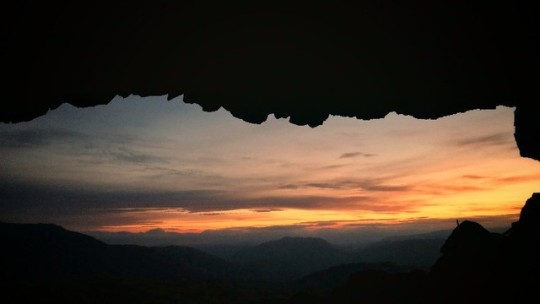
We slept really well despite the less than comfortable sleeping areas within the hole. We awoke at 5am to clear skies and a delightful sunrise, which is what a night in priest's hole is all about, the magnificent sunrise to the east and the stunning views over the mountains of Patterdale. It really is a sight to behold and something which I (and I'm sure Zane too) will never forget.
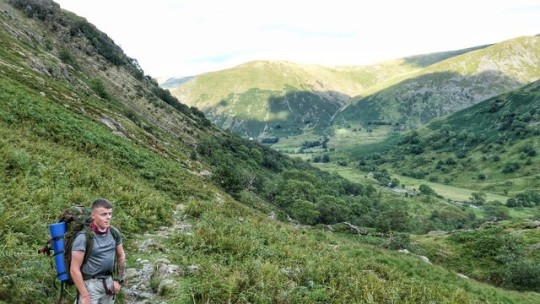

Myself admiring the views
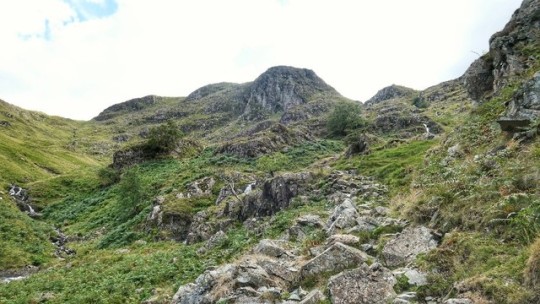
Zane got the coffees on the go whilst I cooked up some tasty bacon on the stove for breakfast. It was quite relaxing just sitting cooking breakfast whilst watching the changing colours of the sky whilst the sun gently rose. After finishing our Breakfast, we packed away our gear and rubbish and headed back down the narrow path from the hole onto the main path. From here, instead of descending back down the steep path we had made our way up the previous evening, we headed slightly north over to the path that leads in a North Easterly direction and heads over Hartsop above How. This would give Zane another Wainwright to tick of the list. It's a lovely walk with fantastic views of the surrounding fells and down into Patterdale.


Hartsop above How

About a mile past Hartsop above How, look for a ladder style that straddles a wall to your right. Head over this style and follow the steep path down the side of the fell and into Low Wood, where the ascent gets really steep all the way back to the car park.


It was a pleasure to accompany Zane on this trip, returning to the place where he could easily have died just 12 months ago. It was inspiring to watch him face his fears and overcome them with a great sense of achievement, but also a deep sense of humbleness, a sense of humbleness that one can possibly only understand when you have stared death in the face and lived to tell the tale.

A quick drive over the Kirkstone Pass to Windermere and through to Ambleside to a lovely little café called the Copper Pot ensued, where we enjoyed a hearty English breakfast outside on the sun terrace. Fantastic local produce and fantastic service make this a stand out place for food in my opinion. And the cakes, don't get me started on the cakes, just don't
6 notes
·
View notes
Text
‘Stunning’ valley named one of the Seven Natural Wonders of the UK – ‘nature at its best’ | Travel News | Travel
‘Stunning’ valley named one of the Seven Natural Wonders of the UK – ‘nature at its best’ | Travel News | Travel
Natural wonders up and down the country are waiting to be discovered by Britons. Located in the Peak District National Park, the first UK natural wonder was named.
Dovedale is easily accessible from Buxton.
Known for the river Dove and its Stepping Stones at the foot of Thorpe Cloud, Dovedale valley is full of natural beauty.
The limestone valley is owned by the National Trust and is a Site of…

View On WordPress
0 notes
Text
Grime Moor
On rather dull overcast day with the National Trust on their Bridestones property. Quite a windy day and, for a fleeting moment, the sun came out.
On rather dull overcast day with the National Trust on their Bridestones property. Quite a windy day and, for a fleeting moment, the sun came out.
To the west of the small secluded valley Dovedale Griff, which was once known locally as the ‘Doodle‘, is what remains of Grime Moor. The effect of the ploughing and ‘improving’ that occurred in the 70s can be seen in the distance.
It is thought by…
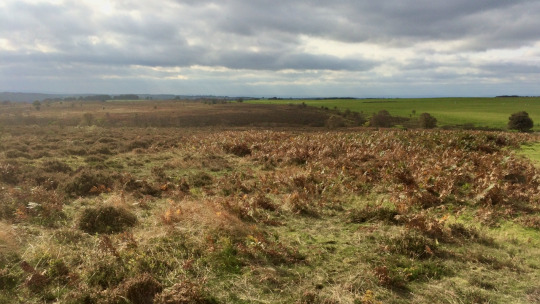
View On WordPress
0 notes
Photo



The quaint village of Milldale
Dovedale valley, Peak District, Staffordshire, England, Unieweed Kingdom ~ Cuma Cevik
#Milldale#Dovedale valley#Peak District#Staffordshire#England#United Kingdom#elegant countryside#cottagecore#cottagecoreedit#garden#my edit
555 notes
·
View notes
Photo
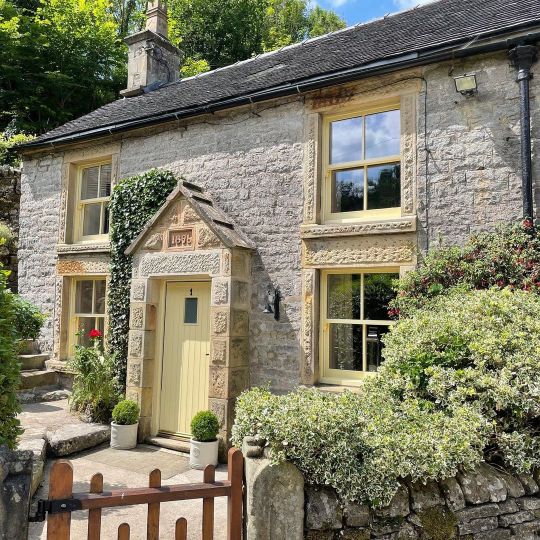
Milldale in the Dove Valley at the northern end of the Dovedale path. The quaint little tea room sells Staffordshire Pasties, which we were reliably informed are like Cornish pasties but made in Cheshire, sold in Staffordshire and by crossing the Milldale foot bridge, can be eaten in Derbyshire. #derbyshire #staffordshire #dovedale #milldale #pasty (at Milldale) https://www.instagram.com/p/CRdw-6WLsYY/?utm_medium=tumblr
0 notes
Text
Peak District National Park and the Staffordshire Moorlands.
Spent a couple of days tramping around the Peak District National Park, specifically Dovedale, a valley in the Peak District- owned by the National Trust. The valley was cut by the River Dove and runs for just over 3 miles between Milldale in the north and a wooded ravine near Thorpe Cloud and Bunster Hill in the south.

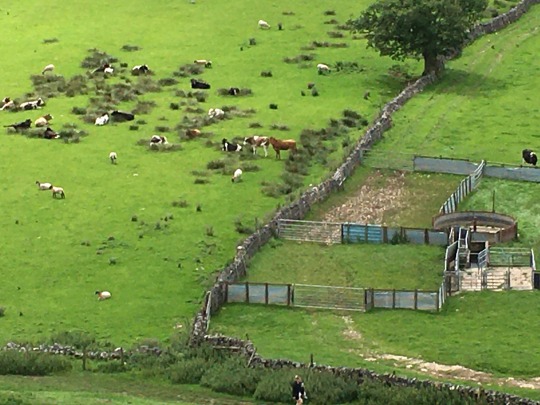

Thorpe and Alstonefield
The beautiful countryside got me thinking…
View On WordPress
#Alstonefield#Derbyshire#Dovedale#National Trust#Peak District National Park#River Dove#Staffordshire Moorlands#Thorpe
0 notes
Photo

New Post has been published on https://vacationsoup.com/a-walk-around-ilam-9-miles/
A Walk Around Ilam (9 Miles)
For some reason, we decided it would be a good idea to do a 9-mile circular walk from the beautiful village of Ilam as our starting point.
Ilam is pronounced 'Eye lamb' by the way and not 'Ill am' as I first thought. Such stupidity will get you in trouble with locals, as will daring to suggest Ramshorn is pronounced anything other than Ramsa. Oh well, you live and learn 🙂
The northward journey out of Ilam took us up to the ridge above the Manifold Valley. This promised some fantastic views across farms, fields and woods.
The only thing about getting to somewhere with a great view of course, means you generally have to climb at least one large hill.
True to form, we walked steadily uphill for 3 solid miles. Given that it was a pretty warm day, I can safely say there was some perspiration going on.
However, we were suitably rewarded for our efforts, with the promised fabulous views. Plus the fact, the high-level cirrus clouds looked amazing too.
I love a good cloud 🙂
Luckily the majority of the rest of the walk was pretty much downhill. This included the descent into Wetton - a nice little village, surrounded by fields and fields of yellow buttercups.
On our return south from Wetton we descended into Hall Dale. This ancient dry river valley joins the spectacular Dovedale about a third of the way down.
As we joined Dovedale, one of the first things we came across was Ilam Rock on the right and Wickering Tor and the left.
These towering limestone rock formations rose impressively above the footpath as we rounded the corner.
This just left us to wander downhill for another couple of miles, along the meandering Dove River, back to the car for a well-deserved sit-down 🙂
0 notes
Text
The church with the feet
The church with the feet

I was running out of time, but it was only a small church and it did not look overly promising. The stonework looked too regular…modern… except for the tower which looked as if it didn’t quite match, and the enclosure of the church itself, right at the heart of the village, which looked older still. And if there is one thing we have learned for certain in our years of ‘church tapping’, it is that…
View On WordPress
#adventure#albion#alchemy#Books#Derbyshire#Don and Wen#Dovedale#landscape#Manifold Valley#Photography#Staffordshire#Stuart France and Sue Vincent#Thor&039;s Cave
0 notes
Text
Regional guide to the Peak District
From heathery moors to rolling hills and underground caverns, the Peak District is home to some of the most majestic landscapes in the country
In the Peak District, heritage takes different forms. Britain is home to 15 National Parks, and the oldest of them is found right here. This much-loved swathe of the Midlands, covering some 555 square miles of dramatic hill terrain, was the very first National Park to be created, back in 1951. To many minds, it still belongs at the top of the pile.
Illustration: Michael Hill
But the history of the Peak District extends way beyond a mid-20th-century assignation. Neanderthal stone tools have been found in its caves, Bronze Age burial mounds still hunch on its ridges and the remnants of age-old hillforts litter its slopes. The Romans came here too, setting out roads and mining for lead, an abundant mineral which later brought fortune to local landowners. The end result is an area dotted with grand stately homes and ancient remains, all of them dwarfed by the wide-open wonders of the landscape itself.
Looked at on the map, unfurled in the green space between Sheffield, Derby and Manchester, the region can be divided into two quite separate areas. The northern half of the National Park, sitting on gritstone rock and characterised by high areas of open moorland, is known as the Dark Peak. The southern half, formed of limestone and playing home to gentle dales, burbling rivers and ash woodland, is known as the White Peak.
Both are fascinating in their own right. The Dark Peak contains the iconic plateau of Kinder Scout, where a mass trespass of 500 walkers in 1932 led to a change in the laws regarding access rights, something the country as a whole still benefits from today. Of the two, however, it’s the White Peak which holds more appeal for the first-time visitor, not least because of the variety of its attractions.
Many of these places of interest are manmade. The wider region contains history-rich market towns like Bakewell, home to the famed pudding of the same name, and Buxton, once a fashionable spa resort and still renowned for its spring water. You’ll also find fascinating little villages such as Eyam, famously cut off from the outside world by a 17th-century plague outbreak, and Youlgreave, one of many settlements that still practices well dressing, a local tradition of decorating wells with flowers and other natural materials a few weeks after Easter.
Dovedale is known for its stepping stones and meandering river. Credit: Alan Novelli/Alamy
Tucked among the Peak District’s rolling hills, meanwhile, are some of the finest stately homes in central England. Top of the list is surely spectacular Chatsworth House, where more than 100 acres of gardens surround a truly grand residence which has passed down through 16 generations of the Cavendish family. Its art collection alone – spanning four millennia – means it should be part of any Peak District itinerary, and Capability Brown himself had a hand in the layout of the gardens.
But Chatsworth is just the start. The region also holds the Elizabethan masterwork that is Hardwick Hall – where the windows are so numerous it’s often described as “more glass than wall” – and the crenellated medieval majesty of Haddon Hall, which has starred on screen in both Jane Eyre and Pride and Prejudice. Lyme Park, once a hunting lodge and still an imposing stately home, is another gem with extensive grounds.
By way of contrast to these mighty mansions rising from the land, the White Peak also has large-scale attractions underground. Poole’s Cavern near Buxton is home to vast subterranean chambers, and the show caves around the town of Castleton – so named for the ruined 11th-century castle that still stands here – provide more of the same.
Haddon Hall has been famous for its roses since Elizabethan times
Some of these, such as Treak Hill Cavern and Blue John Cavern, grant access to natural netherworlds of rare rock types and age-old stalactites and stalagmites. Others, including Speedwell Cavern and Peak Cavern – the latter, incidentally, also known as The Devil’s Arse – give insight into the underground industry and mining practices that have been a part of Peak District life for so long.
The creator of Sherlock Holmes, Arthur Conan Doyle, was so impressed by the scale and extent of the mines and caves beneath the region that he pronounced “all this country is hollow – could you strike it with some gigantic hammer it would boom like a drum.” It’s known that the author once stayed at Castleton, and the fact that he later set a story in the area shows that the formations above ground made no less of an impression.
Not far from Castleton is the great shapely hill of Mam Tor, arguably the best-known summit in the National Park. Once the site of a hillfort, its 517-metre-high top can be reached with relative ease via a paved footpath. Being roughly at the centre of the entire region, it grants deep views in every direction. If you’re in the mood for continuing the walk, the Great Ridge carries on from Mam Tor, eventually rising to meet Lose Hill, a popular hike of around 2.5 miles each way.
Once a spa resort, Buxton is renowned for its spring water. Credit: Ian Hubball/Alamy
The Peak District is full of more challenging outdoor options, from the climbing hotspot of the Stanage Edge escarpment to long-distance treks such as the Pennine Way, which begins here in the mellow little village of Edale. If you’d rather sample the scenery in a more sedate manner, however, the options are just as numerous.
The three adjoining reservoirs of Ladybower, Derwent and Howden offer miles of flat walking and cycling terrain, as well as the chance to encounter more history – the area was used for dummy trials of Professor Barnes Wallis’ famous ‘bouncing bomb’ in the Second World War, thanks to its physical resemblance to Germany’s Rühr dams. It later starred in the film The Dam Busters.
Further south is picturesque Dovedale, a valley known for its stepping stones and meandering river. It draws plenty of visitors, but do make the effort to walk past the stepping stones, after which the crowds start to thin. And if you’d rather avoid the main flow of tourism altogether, the region has a whole host of quieter scenic valleys, among them Cressbrook Dale, Monk’s Dale and Peter Dale. Because that’s the thing with a place as broad and varied as the Peak District – it’s packed with attractions, but there’s also plenty of space to go round. Which, somewhere as handsome as this, can only be a good thing.
Getting there
The Peak District is easily reached by car, being around 3hr 15min from London, 1hr 30min from Birmingham and only an hour or so from Manchester. The National Park is also well served by bus and rail, with train stations at places such as Edale, Hope and Hathersage. nationalexpress.com; thetrainline.com
Where to stay
The Cavendish Hotel on the Chatsworth House estate offers finely furnished rooms and an excellent restaurant. The Peacock at Rowsley is a luxurious option near Bakewell with four-poster bedrooms and a fine-dining restaurant. Alstonefield Manor is a B&B with bags of charm, set in a country house on the hills above Dovedale. Expect fresh flowers, high-class decor and scones and tea on arrival. cavendishbaslow.co.uk; thepeacockatrowsley.com; alstonefieldholidaycottages.com
Where to eat
An atmospheric 18th-century pub on the village green at Alstonefield, The George offers Michelin-recommended dining, thanks in part to having its own vegetable garden. Other local produce, such as Derbyshire beef, features heavily on the menu. thegeorgeatalstonefield.com
READ MORE: The Lake District: an insider’s guide
The post Regional guide to the Peak District appeared first on Britain Magazine | The official magazine of Visit Britain | Best of British History, Royal Family,Travel and Culture.
Britain Magazine | The official magazine of Visit Britain | Best of British History, Royal Family,Travel and Culture https://www.britain-magazine.com/features/guide-peak-district/
source https://coragemonik.wordpress.com/2019/10/01/regional-guide-to-the-peak-district/
0 notes
Text
We’ve just come back from Dovedale.
Dovedale? Yes, it’s in the Peak District, a glorious part of England, part of its Pennine spine. There are old stone-built towns and villages with long histories of hard work in mining, textiles and farming. There are limestone and millstone grit uplands and escarpments, with distant forest and moorland views, and valleys and gorges cut deep into the limestone. There are ancient stone circles and enchanting landscapes. Forget modern life, put on your walking boots and explore.
We had four wonderful days, which for once, we didn’t have to organise. Here’s why.
Walking with our group, as the afternoon sun cast our shadows against a drystone wall.
Autumn was begining to show its colours, but summer temperatures remained. We walked. I didn’t have a camera (Barcelona…..). I had a new mobile phone though. It isn’t the same, but I played with some of its gizmos. Here are my postcards from Dovedale.
Thorpe Cloud. It’s a tough triangular hill, formed of marine skeletons which haven’t easily eroded.
The Nine Ladies, a Bronze Age standing circle.
This fly agaric was an early victim of special effects on my phone.
Views from the heather moorland near the Nine Ladies. We’re by a Bronze Age cairn
Special FX again….
These drystone wall edged fields are reminiscent of the Yorkshire Dales.
The stepping stones across the river in Dovedale…..
… the needle-like crags…..
… the caves…
..the autumn colours near the riverside.
Autumn colour again
And a deliberately impressionistic take on the trees reflected in the water.
Click on any image to see it full size.
Postcards from Dovedale We've just come back from Dovedale. Dovedale? Yes, it's in the Peak District, a glorious part of England, part of its Pennine spine.
0 notes